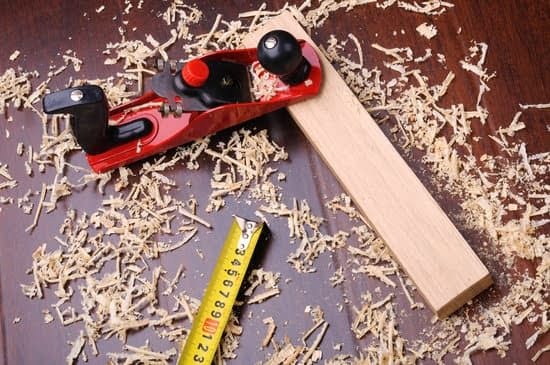If you’re wondering how to build a woodworking shop, you’ve come to the right place. Setting up a woodworking shop requires careful planning and consideration of various factors, from the size and location of your space to essential tools, safety measures, and creating a supportive community. In this article we’ll explore the step-by-step process of building a woodworking shop that meets your needs and enables you to pursue your passion for woodworking.
First and foremost, when it comes to setting up a woodworking shop, it’s crucial to carefully plan the layout, size, and location of your space. Factors such as ventilation, lighting, and accessibility are all important considerations that can impact the functionality and safety of your workshop. Once you have a clear idea of your space requirements and layout considerations, you can move on to acquiring essential tools and equipment.
Once you have planned out your space and acquired the necessary tools, it’s time to focus on creating a functional workbench and efficient storage solutions for wood, tools, and accessories. Additionally, choosing the right materials for your projects is essential for achieving quality results. By exploring different wood types and their characteristics, you can select the best materials for each woodworking project.
Throughout this process, safety measures should be implemented to protect yourself and others in the shop while also ensuring proper maintenance of your tools and equipment. Stay tuned as we delve into these important aspects of building a woodworking shop in detail.
Acquiring Essential Tools and Equipment
Building a woodworking shop requires careful planning, especially when it comes to acquiring essential tools and equipment. One of the most important tools in any woodworking shop is the table saw, which can be used for a wide range of cuts, making it an indispensable piece of equipment.
Band saws are also crucial for cutting irregular shapes and resawing lumber, while routers are essential for creating intricate designs and joinery. Additionally, hand tools such as chisels, mallets, and hand planes are necessary for finer detail work and finishing touches.
When setting up your woodworking shop, it’s important to invest in high-quality tools that will last for years to come. While there are various brands and models available for each type of tool, choosing durable options will ensure that you have reliable equipment for all your woodworking projects. From reputable table saw manufacturers like SawStop or Delta to well-crafted hand tools from Lie-Nielsen or Veritas, there are plenty of options depending on your specific needs.
It’s also crucial to consider safety features when acquiring essential tools for your woodworking shop. Many modern table saws come equipped with safety features such as flesh-sensing technology to minimize the risk of serious accidents. When purchasing band saws or routers, look for models with user-friendly safety controls and easy-to-understand instructions. By prioritizing safety in tool acquisition, you can create a secure environment in your woodworking shop and minimize the risk of accidents or injuries.
| Woodworking Tool | Recommended Brands |
|---|---|
| Table Saw | SawStop, Delta |
| Band Saw | JET, Grizzly |
| Routers | Bosch, DeWalt |
Setting Up a Workbench and Storage
When it comes to setting up a woodworking shop, one of the most important areas to focus on is the workbench and storage. A well-designed workbench can make a significant difference in the efficiency and quality of your woodworking projects, while efficient storage solutions are essential for keeping your tools, wood, and accessories organized and easily accessible.
Here are some key steps for setting up a workbench and storage area in your woodworking shop:
1. Designing your workbench: Consider the size of your workspace and the type of projects you will be working on when designing your workbench. Do you need a large surface area for big projects or multiple smaller workbenches for different tasks? Also, think about incorporating features such as built-in tool storage, vices, and clamping systems to make your workbench even more functional.
2. Building a sturdy workbench: Once you have planned out the design of your workbench, it’s time to build it. Choose high-quality materials that can withstand heavy use and provide stability for your projects. Whether you choose to build a traditional hardwood bench or opt for a more modern metal frame, ensure that your workbench is solid and level.
3. Creating efficient storage solutions: Proper storage is crucial in a woodworking shop to keep tools and materials organized and easily accessible. Consider installing wall-mounted tool racks, shelving units, and under-bench cabinets to maximize space and keep clutter at bay.
Setting up an effective workbench and storage area is vital for any woodworking shop as it provides the foundation for successful projects. By following these steps, you can create a workspace that meets your needs both in terms of functionality and organization.
Choosing the Right Materials
When it comes to woodworking, the type of wood you choose can greatly affect the outcome of your project. From hardwoods like oak and maple to softwoods such as pine and cedar, each wood type has its own unique characteristics and uses. Understanding the different qualities of various wood types is essential in selecting the right materials for your woodworking projects.
Understanding Wood Characteristics
Before choosing the right materials for your woodworking project, it’s important to understand the characteristics of different wood types. Hardwoods are known for their durability and strength, making them ideal for furniture and flooring. Softwoods, on the other hand, are suitable for projects like trim work, outdoor furniture, and construction.
Selecting the Best Materials
When selecting materials for your woodworking project, consider factors such as color, grain pattern, texture, and cost. For example, if you’re looking for a wood with a rich grain pattern for a tabletop or cabinet door, you might opt for mahogany or cherry. If you’re on a budget but still want quality results, pine or birch could be suitable alternatives.
Choosing Quality Wood Suppliers
Finding a reliable wood supplier is crucial in ensuring that you have access to high-quality materials for your woodworking shop. Look for suppliers that offer a variety of wood types, properly seasoned and kiln-dried to prevent warping or cracking. Additionally, consider suppliers who can provide custom cuts based on your project requirements.
By understanding the characteristics of different wood types and knowing how to select the best materials for various woodworking projects, you can ensure that your creations are not only visually appealing but also durable and long-lasting. Whether you’re crafting furniture pieces or decorative items, choosing the right materials is key to achieving successful results in your woodworking endeavors.
Safety and Maintenance
When building a woodworking shop, one of the most important factors to consider is ensuring a safe working environment for yourself and others who may use the space. Here are some tips for implementing safety measures:
1. Invest in proper safety gear: Make sure to have essential safety equipment such as goggles, ear protection, and dust masks. It’s also crucial to have a first aid kit on hand in case of accidents.
2. Keep your tools in good condition: Regular maintenance of your tools is essential for their proper functioning and your safety. Sharpen blades, replace worn-out parts, and keep all tools clean and well-organized.
3. Implement good housekeeping practices: A cluttered and messy workspace can increase the risk of accidents. Keep your woodworking shop clean, organized, and free of unnecessary items that could get in the way or cause tripping hazards.
In addition to safety measures, it’s also important to properly maintain your tools and equipment to ensure their longevity and performance:
– Regularly oil and lubricate moving parts to prevent rust and corrosion.
– Check power cords for any signs of fraying or damage.
– Keep blades sharp for cleaner cuts and safer operation.
– Store tools in a dry environment to prevent moisture damage.
By prioritizing safety and maintenance in your woodworking shop, you can create a space that promotes productivity, creativity, and peace of mind for anyone who uses it.
Designing the Layout
Once you have assessed the size and location of your woodworking shop, it’s time to focus on designing the layout to optimize workflow efficiency and productivity. A well-thought-out layout will not only make your projects run smoother but also contribute to a safer working environment. When considering how to build a woodworking shop with an efficient layout, there are several key factors to keep in mind.
Workflow Efficiency
When planning the layout of your woodworking shop, think about the flow of work from one area to another. Start by identifying key work zones, such as cutting, assembly, sanding, and finishing. Position these areas in a sequence that makes sense for the type of projects you typically work on. For example, it may be beneficial to place the table saw near the wood storage area for easy access.
Dust Collection and Noise Control
In any woodworking shop, managing dust and controlling noise are crucial considerations for both health and comfort. Integrate a dust collection system into your layout to minimize airborne particles and keep your workspace cleaner. Place dust-producing machines such as sanders and routers close to the collection system. Additionally, consider soundproofing measures if your shop is located in a shared space or residential area.
Flexibility
While striving for an optimized layout is important, it’s also beneficial to maintain flexibility within your woodworking shop design. As you gain experience and tackle a variety of projects, you may find it necessary to reorganize or introduce new equipment. Keep this in mind when setting up your initial layout so that adjustments can be made easily as needed.
As you consider how to build a woodworking shop with an effective layout, take time to plan and visualize different scenarios before committing resources or making permanent changes. By carefully optimizing your workspace for workflow efficiency while incorporating dust collection and noise control measures, you’ll create an environment that enhances both productivity and safety.
Creating a Dedicated Finishing Area
When creating a dedicated finishing area in your woodworking shop, it’s important to prioritize proper ventilation and storage for finishing supplies. Ventilation is crucial when working with paints, stains, and other finishing products as they can emit harmful fumes.
Installing an exhaust fan or system that directs air outside the shop is an effective way to ensure good air circulation while working on finishing projects. Additionally, consider using a respirator mask when applying finishes to further protect your respiratory health.
Another essential aspect of setting up a dedicated finishing area is maintaining organized storage for finishing supplies. Keep all paints, stains, brushes, rags, and other accessories in labeled containers or cabinets to prevent clutter and confusion during the finishing process. Proper storage not only streamlines your work but also helps prolong the shelf life and quality of your finishing products.
In addition to ventilation and storage considerations, it’s beneficial to have a designated space within your woodworking shop that is specifically meant for the application of finishes. This allows you to segregate potentially messy or odorous tasks from other woodworking activities. Whether it’s a separate room or just a well-defined area within your shop, having a dedicated space for finishing can greatly improve the organization and efficiency of your woodworking projects.
| Aspect | Considerations |
|---|---|
| Ventilation | Install an exhaust fan or system for good air circulation. |
| Storage | Keep finishing supplies organized in labeled containers or cabinets. |
| Dedicated Space | Create a specific area within the woodworking shop for applying finishes. |
Building a Supportive Community
In conclusion, building a woodworking shop is an exciting and rewarding endeavor for any woodworking enthusiast. By carefully planning your space, acquiring essential tools and equipment, setting up a workbench and storage, choosing the right materials, prioritizing safety and maintenance, designing the layout, creating a dedicated finishing area, and building a supportive community, you can create a space that fosters creativity, productivity, and continuous learning.
One of the most crucial aspects of building a woodworking shop is connecting with other woodworkers to share knowledge and experiences. Joining woodworking clubs and participating in workshops and events not only provides valuable learning opportunities but also allows you to connect with like-minded individuals who share your passion for woodworking. Whether you are a novice or an experienced woodworker, being part of a supportive community can inspire new ideas, provide helpful advice, and create lasting friendships.
Additionally, continuously seeking ways to learn and grow in your craft is essential for any woodworker. By staying informed about the latest techniques, tools, and trends in woodworking through workshops and events, you can elevate your skills and expand your creative abilities.
Embracing lifelong learning not only enriches your woodworking experience but also ensures that your woodworking shop remains a space of innovation and inspiration. Overall, by following these steps and actively engaging in the woodworking community, you can build a thriving woodworking shop that fulfills your passion for creating beautiful wood projects.
Frequently Asked Questions
What Do I Need to Set Up a Woodworking Shop?
Setting up a woodworking shop requires a few essential items. You’ll need quality hand tools like chisels, saws, and planes, as well as power tools such as a table saw, drill press, and router.
A sturdy workbench, clamps, and safety equipment like goggles and dust masks are also necessary. Additionally, you may want to consider adding specialty tools based on the type of woodworking you plan to do.
Are Woodworking Shops Profitable?
Woodworking shops can be profitable depending on various factors. The quality of your work, the demand for your products in the market, and your ability to efficiently manage costs all play a role in determining how profitable a woodworking shop can be. Many woodworkers find success by focusing on custom or unique pieces that cater to specific niche markets.
What Machines Do I Need in a Woodworking Shop?
There are several machines that are essential in a woodworking shop. A table saw is crucial for making straight and accurate cuts, while a jointer and planer help ensure smooth and flat surfaces for your projects.
Other important machines include a bandsaw for curved cuts, a drill press for making precise holes, and a router for shaping edges and creating joinery. Depending on the type of projects you take up, additional machines like lathes or sanders may also be needed.

Hi everyone! I’m a woodworker and blogger, and this is my woodworking blog. In my blog, I share tips and tricks for woodworkers of all skill levels, as well as project ideas that you can try yourself.





